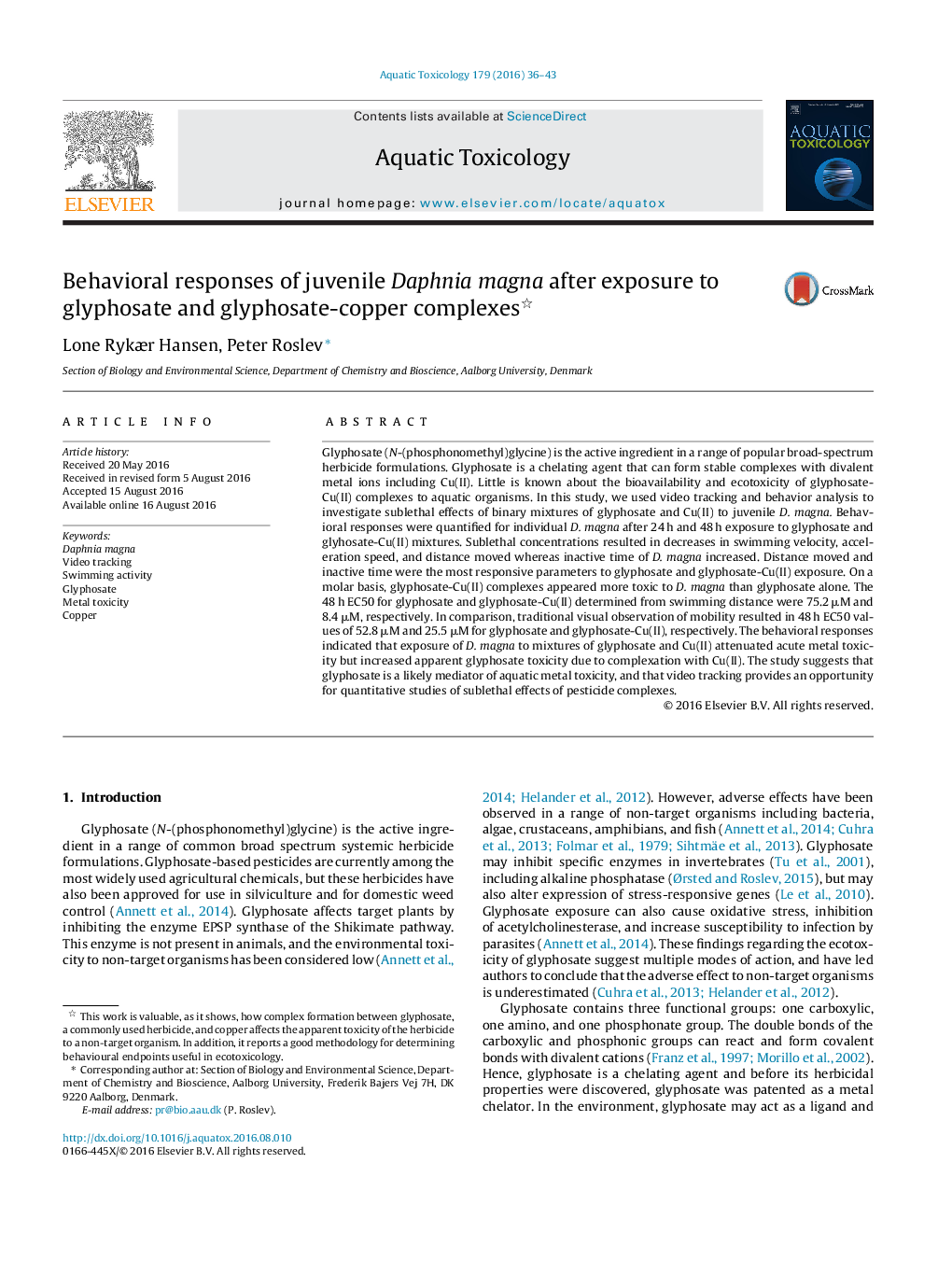| کد مقاله | کد نشریه | سال انتشار | مقاله انگلیسی | نسخه تمام متن |
|---|---|---|---|---|
| 4528888 | 1625926 | 2016 | 8 صفحه PDF | دانلود رایگان |

• Sublethal exposure to glyphosate-Cu(II) complexes changed behavior of D. magna.
• Glyphosate-Cu(II) changed swimming velocity, acceleration, distance moved and inactivity.
• Glyphosate-Cu(II) complexes were more toxic to D. magna than glyphosate alone.
• Glyphosate is a likely mediator of aquatic metal toxicity and vice versa.
• Video is suitable for studying effects of pesticide complexes to aquatic invertebrates.
Glyphosate (N-(phosphonomethyl)glycine) is the active ingredient in a range of popular broad-spectrum herbicide formulations. Glyphosate is a chelating agent that can form stable complexes with divalent metal ions including Cu(II). Little is known about the bioavailability and ecotoxicity of glyphosate-Cu(II) complexes to aquatic organisms. In this study, we used video tracking and behavior analysis to investigate sublethal effects of binary mixtures of glyphosate and Cu(II) to juvenile D. magna. Behavioral responses were quantified for individual D. magna after 24 h and 48 h exposure to glyphosate and glyhosate-Cu(II) mixtures. Sublethal concentrations resulted in decreases in swimming velocity, acceleration speed, and distance moved whereas inactive time of D. magna increased. Distance moved and inactive time were the most responsive parameters to glyphosate and glyphosate-Cu(II) exposure. On a molar basis, glyphosate-Cu(II) complexes appeared more toxic to D. magna than glyphosate alone. The 48 h EC50 for glyphosate and glyphosate-Cu(II) determined from swimming distance were 75.2 μM and 8.4 μM, respectively. In comparison, traditional visual observation of mobility resulted in 48 h EC50 values of 52.8 μM and 25.5 μM for glyphosate and glyphosate-Cu(II), respectively. The behavioral responses indicated that exposure of D. magna to mixtures of glyphosate and Cu(II) attenuated acute metal toxicity but increased apparent glyphosate toxicity due to complexation with Cu(II). The study suggests that glyphosate is a likely mediator of aquatic metal toxicity, and that video tracking provides an opportunity for quantitative studies of sublethal effects of pesticide complexes.
Journal: Aquatic Toxicology - Volume 179, October 2016, Pages 36–43